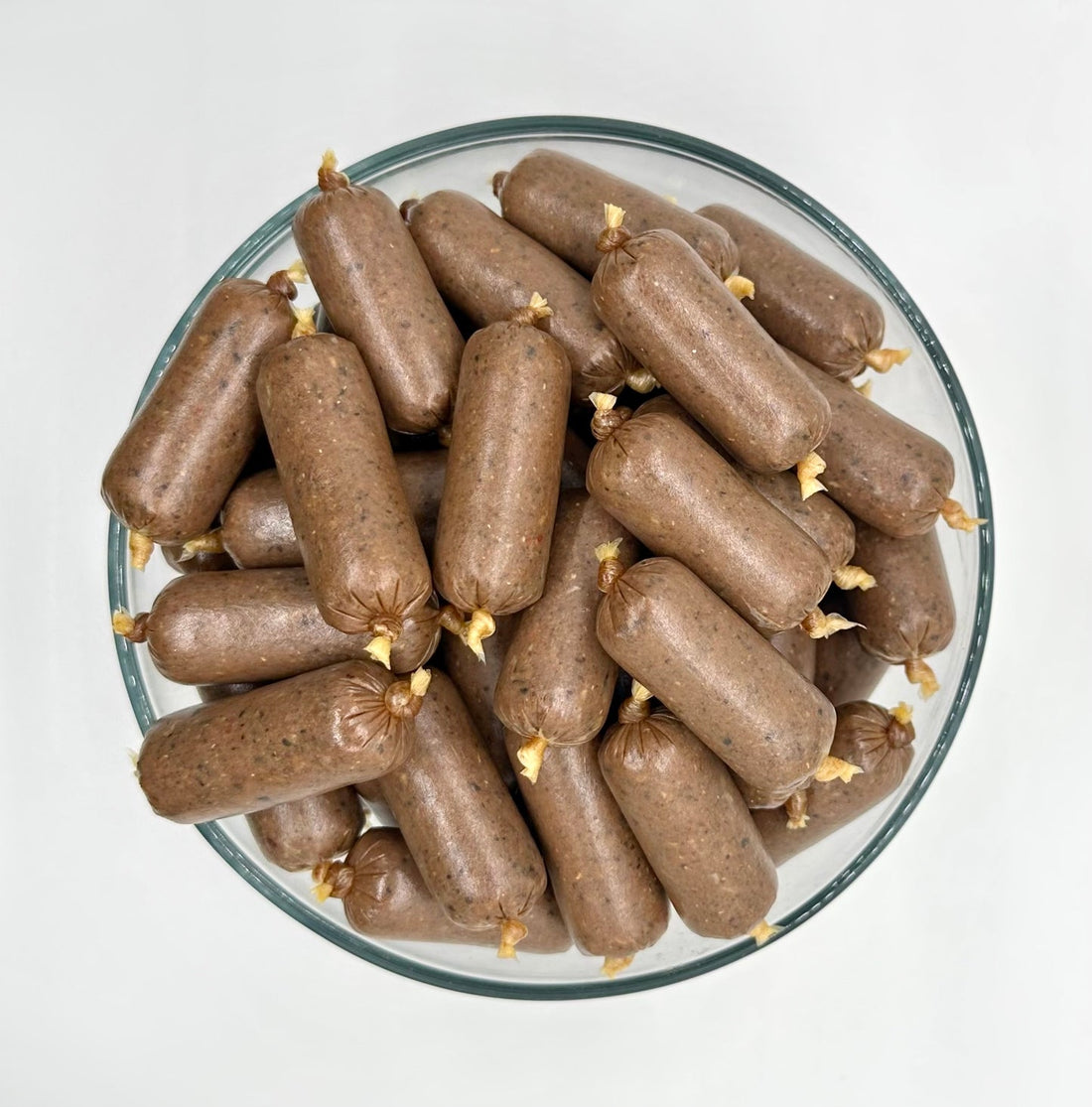Every reptile and amphibian needs a vast range of vitamins, minerals, and nutrients to stay healthy. In the wild, they secure these healthy compounds from their diet, which is typically much more varied than what we humans provide in captivity. One of the best ways to keep your cold-blooded friend in good health is to offer unique foods that they might find in their native habitats. That’s why Reptilinks developed the Bayou Blend links—to make it easier than ever to incorporate unique food items into your animal’s diet. Here’s what you need to know about Bayou Blend links, from what’s in them to the animals that like them the most and whether they’re right for your herps too.
What’s in the Bayou Blend Links?
Reptilinks’ Bayou Blend line is made of 50% insects as a baseline. These bugs include hisser roaches, grasshoppers, crickets, and superworms. This variety helps to cover the spectrum when it comes to nutrition; for instance, hisser roaches are a protein powerhouse without the fat content of some of the common reptile snacks, like mealworms. When it comes to antioxidants, it’s hard to beat grasshoppers (in human terms, grasshoppers have about five times more antioxidants than orange juice!).
On top of the insect content, the other 50% of the Bayou Blend links are made of 25% bullfrog legs and 25% crawfish raised in Louisiana. Bullfrogs and crawfish are an important part of many reptiles’ and amphibians’ natural diets, but it can be tough to find these prey items for sale.
Who Eats Bayou Blend?
Naturally, the Bayou Blend links have more of an aquatic focus than many other types of Reptilinks, which utilize land mammals and birds. Because of that, these links are a great way to offer variety into the diet of most omnivores—and they can be part of staple feeding for certain aquatic and semi-aquatic animals for whom frogs and crustaceans are central to their natural food choices.
Caimans
It likely comes as no surprise that aquatic reptiles such as caimans, alligators, and crocodiles often consume frogs and similar prey items as part of their diet. Those keeping these predators in captivity can mix Bayou Blend among their other offerings to ensure they’re receiving the full spectrum of nutrition, including the B vitamins, which are more plentiful in frogs than in some mammalian sources.
Amphibians
Reptiles are not the only animals that benefit from Bayou Blend links. Amphibian keepers have seen success with these food items, especially in species that are already cannibalistic (such as the African bullfrog, poison dart frog, and pacman frog). Most commonly kept species ready accept Bayou Blend links, which can help them fulfill their natural behaviors without the added challenge of cleaning wasted, uneaten bugs out of water sources.
Turtles
Turtles and even many types of tortoises will opportunistically consume frogs, bugs, and crustaceans in addition to their largely plant-based diets. Snapping turtles, in particular, have responded well to Bayou Blend links, though they are appropriate for a wide range of Testudines. Commonly kept species such as box turtles, painted turtles, sliders, snapping turtles, any side-necked turtles, sulcatas, and Russian tortoises, among many others, can all enjoy this link formulation.
Semi-Aquatic Lizards
Crocodiles and the like are not the only reptiles that can be found in or near water. Many semi-aquatic species regularly feast on the bugs, crustaceans, and frogs that make up Bayou Blend links and respond well to the scent. Caiman lizards, a relative of the teiid family (tegus), are good candidates for Bayou Blend links because their diet contains many aquatic prey items with tough shells, such as crawfish. Chinese water dragons consume a large variety of insects and meat, preferring prey items over vegetation; this makes them good candidates for the protein-focused Bayou Blend as well.
Snakes
Yes, even snakes can enjoy Reptilinks! The natural collagen casing is strong enough to stand up to their coils while being fully digestible. Snakes that naturally prey on aquatic animals are an easy choice for Bayou Blend links; these include the many Nerodia (water snakes, a type of colubrid) as well as false water cobras, whose diet consists largely of frogs. However, don’t leave out all of the terrestrial snakes! Many owners report that their hognose snakes are fans of Bayou Blend, which likely arises from their natural prey selection that includes frogs, salamanders, and many types of insects. Similarly, garter snakes and king snakes are good candidates for Bayou Blend links, as their diets include frogs, large invertebrates, and even other snakes.
An Omnivore’s Blend of Nutrients
As you can see, Bayou Blend links aren’t a niche product—they’re great for many of the most common reptiles and amphibians kept in captivity. Because of their nutritious mixture of insects and proteins with low fat content compared to other foods, the majority of omnivores should see great success when trying Bayou Blend links.
If your pet is not showing interest in the link, that’s all right; after all, this is likely a new and unusual smell for them compared to their usual mammalian snacks! Try poking a small hole in the link’s casing to allow a stronger scent to develop. For animals that use thermal sensing (such as pythons), gently warm the link in warm water to assist your pet in seeing the link and understanding that it is food. You can even scent the link with favored food items, such as by rubbing the link with a mouse. Don’t worry—once an animal tastes a Bayou Blend link for the first time, they’re usually very excited about them in the future!
Remember that Reptilinks packs a lot of nutrition into every link. That’s because insects grind down into a very compact powder, which means that Bayou Blend links have more calories than other similarly-sized food items. Keep an eye on your pet’s weight and either space feedings differently or choose a different link size to keep them at a healthy weight. Treat each link as a full meal for the best results.

